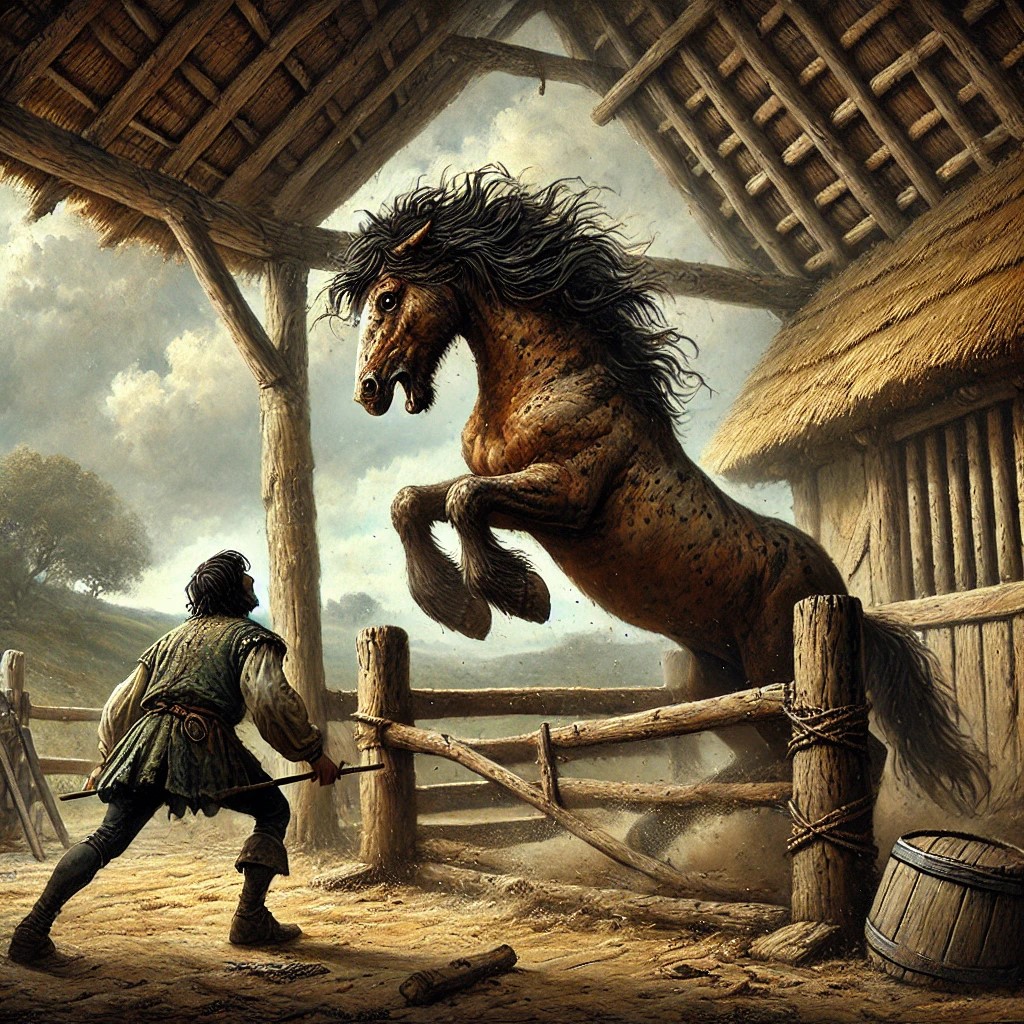Domesticate Horses (sage ability)
Domesticate Horses is an amateur-status sage ability within the study of Horseback Riding, describing the process of subduing and training a wild or feral horse for riding. Unlike horses that have been domesticated from birth, wild horses have never been handled by humans and lack the early conditioning that makes conventional training possible. As such, they exhibit instincts and behaviours that resist standard methods of breaking and saddle-training.
Similarly, feral horses — those descended from domesticated stock but raised without human care — can be just as difficult to train. Horses that have grown up outside of human control often develop undesirable habits such as wood chewing, excessive restlessness, weaving, kicking or aggressive behavior, making their training process more unpredictable than that of a purely domestic horse.
Taming
Taming a wild or feral horse requires the use of a mouthing bridle, a noseband (cavesson), a saddle (without a crupper or stirrups) and a lead rope. The process varies depending on the horse's temper, tractability and disposition, but typically takes between 2 and 8 days before the animal can be safely mounted. A skilled trainer must assess the horse's readiness before proceeding.
The first steps involve soothing and coaxing the horse into accepting the saddle. Once saddled, the animal is worked until tired, requiring 2 to 3 hours of movement before an attempt is made to mount. The rider must then make a dexterity check upon mounting; failure results in the rider being thrown, causing 0-1 points of damage. To complete the day's training, the horse must be remounted until a successful dexterity check is made. This process is repeated daily, with a horse typically requiring 1 to 4 days of training before it can be considered ready for riding.
Use of Unskilled Hands
A single skilled character in domesticating horses can oversee the breaking process, allowing a group of unskilled riders to help wear out the animals before they are properly trained. These riders must have some level of horse-riding ability, but they do not need to be levelled characters. As long as they possess at least three knowledge points in horse domestication, and a skilled character supervises them, they can contribute to the effort.
This method allows for multiple riders to endure the damage of breaking a large number of horses in a single day, rather than a single trainer absorbing all the risks. Only one rider can mount a horse at a time, with the overseer ensuring the process is followed correctly. Preparing each wild horse with a bridle, noseband and saddle takes a little more than five minutes per animal, though managing an entire group of restless and resistant horses increases the time considerably. A skilled trainer can equip and ready 20 horses in approximately two hours, preparing them for the process of wearing them out under unskilled riders.
Fractious Period
Though a wild horse can be ridden and managed after 1 to 4 days of training, it remains fractious and unreliable for an extended period. A newly domesticated horse requires 7 to 12 months before it ceases to react unpredictably, even under the guidance of an experienced rider. Until this period has passed, the horse must make a pedigree check against its courage, rolled on a d20, whenever asked to perform any action beyond ordinary riding on a comfortable surface.
For example, an unsteady horse may fight the bit if asked to turn sharply off a well-worn path, balk at crossing water or resist unfamiliar maneuvers. Even routine activities like quick stops, sudden noises or unexpected terrain shifts may trigger the horse's instinct to rear, bolt or buck. While it is ridable, it remains unpredictable, requiring consistent handling and patience to become fully dependable.
